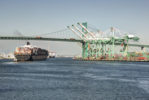
Visit Our Sponsors |
|
|
|
|
|
|
|
|
|
|
|
|
|
|
|
|
|
|
|
|
|
|
|
|
|
|
|
|
|
|
|
|
|
|
|
|
|
|
As the longest segments in any asset's lifecycle, operation and maintenance (O&M) represent the highest costs associated with it. "An asset can consume tremendous amounts of energy during the operating phase of its life," says Senior Analyst Paula Hollywood, the principal author of ARC's "Asset Reliability Software & Services Global Market Research Study". "Assets with moving parts can be expensive to monitor and maintain. Any improvements a manufacturer can make in this lifecycle phase can have a significant impact on the bottom line."
Increased automation in manufacturing plants and other industrial facilities has reduced the need for manpower, but maintenance costs and cost of ownership are on the rise as a result. Under pressure to improve safety and reduce environmental impact, industrial organizations continue to invest in reliability software and services, which can provide measurable improvements in maintenance effectiveness, resulting in improved product quality, reduced maintenance costs, and reduced downtime. When implemented as part of a long-term commitment to improving reliability, return on investment can be relatively quick. Formal industry standards provide a framework for both economies of design and improved product and service quality. Standards facilitate interoperability, production improvements, and scalability of asset management programs among different industries and between plants. Standards can also help improve quality of life by contributing to safety, human health, and environmental protection. The lack of an asset management standard has left manufacturers to their own devices to determine best practices. ISO 55000 will change that as the standard is released and adopted during the outlook period.
Source: ARC Advisory Group
Keywords: operations & maintenance, asset management, asset lifecycle, supply chain management IT
RELATED CONTENT
RELATED VIDEOS
Timely, incisive articles delivered directly to your inbox.






